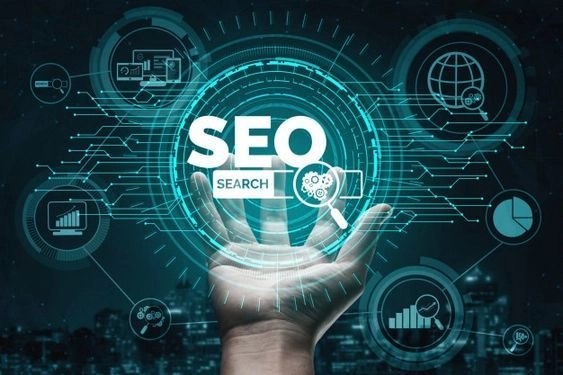
The Job of Site Speed in Search engine optimization and Client Experience: Why It’s A higher priority Than any time in recent memory
When was the last time you clicked on a link and immediately bounced back because the page took too long to load? Chances are, it wasn’t too long ago. With instant gratification becoming the norm in today’s digital world, website speed plays a pivotal role in both search engine optimization (SEO) and user experience (UX). But did you know that site speed is not just a technical feature—it’s a key factor that can make or break your website’s success?
In this post, we’ll explore why website speed matters so much in 2024, how it impacts SEO rankings, and what you can do to ensure your site delivers a smooth user experience.
Website Speed and User Experience: The Connection
Contemplate your own perusing propensities briefly. When you visit a site, what’s the primary thing you notice? For the overwhelming majority of us, it’s the speed with which the page loads. A delay of just a few seconds can result in frustration, and if the page takes too long to load, users are likely to abandon the site entirely.
According to studies, 47% of users expect a web page to load in under 2 seconds, and 40% will leave a website if it takes more than 3 seconds to load. This immediate drop-off can have a huge impact on your site’s performance. A slow website doesn’t just affect user satisfaction—it can also hurt your conversion rates and bounce rates, both of which are crucial metrics for tracking the health of your site.
When users have a bad experience, they are less likely to engage with your content, sign up for newsletters, make purchases, or return to your site in the future. On the other hand, fast-loading websites improve user satisfaction, increase engagement, and ultimately boost conversions. Speed isn’t just a decent to-have — it’s an irrefutable need for an ideal client experience..
How Website Speed Affects SEO
In addition to improving UX, website speed is a critical ranking factor in Google’s search algorithm. Google has long emphasized the importance of delivering fast, relevant results to users, and it continuously fine-tunes its algorithm to prioritize websites that offer a better experience.
In 2024, Google keeps on estimating Center Web Vitals, a bunch of measurements that emphasis on client experience, including page load speed, intuitiveness, and visual dependability. Specifically, Largest Contentful Paint (LCP), First Input Delay (FID), and Cumulative Layout Shift (CLS) are all designed to assess how quickly your website provides a usable and stable experience for visitors. These metrics directly influence your website’s SEO ranking.
- Google’s Page Experience Update
Since 2021, Google’s Page Experience Update has highlighted how critical site speed is for ranking. If your website has slow loading times, Google might rank it lower than competitors with faster sites—even if your content is top-notch. Why? Because Google wants to prioritize sites that provide a great experience for users. And, let’s face it, a slow website is a poor user experience. - Bounce Rates and Dwell Time
Website speed can also affect your bounce rate, the percentage of visitors who leave your site after viewing only one page. A high bounce rate is a red flag for search engines, suggesting that users didn’t find what they were looking for, or the experience was frustrating.
Website Speed: A Key Factor for Mobile SEO
With mobile-first indexing now the standard, website speed is even more critical. Mobile users are often browsing on-the-go, so they expect fast loading times, particularly on mobile data networks. A slow mobile site can lead to a higher bounce rate and missed opportunities for local SEO.
The most effective method to Work on Your Site’s Speed for Better UX and Search engine optimization
Now that we’ve covered why website speed is so important for SEO and user experience, let’s dive into some actionable steps you can take to speed up your website.
- Optimize Your Images
One of the biggest culprits of slow page load times is unoptimized images. Large image files can take a significant amount of time to load, especially on slower internet connections. Compressing images without compromising on quality can drastically reduce your page load time. - Leverage Browser Caching
Browser caching allows your website to store certain files in a user’s browser. This means that when users revisit your site, their browser doesn’t have to reload all of the assets from scratch, resulting in faster load times. - Minimize HTTP Requests
Each component on your page — pictures, scripts, and templates — requires a HTTP solicitation to stack. The more components your page has, the more it will take to stack. Minimizing these requests by combining files, using CSS sprites, and reducing the number of elements on your page can improve load time. - Use a Content Delivery Network
A CDN stores duplicates of your site on various servers situated all over the planet. At the point when a client visits your webpage, the CDN serves the site from the server nearest to them, decreasing dormancy and accelerating the stacking time. - Optimize Your Code
Over time, websites can accumulate unnecessary code—whether it’s unused JavaScript, bloated CSS, or redundant HTML. Minifying and cleaning up your code can reduce file sizes and improve loading times. - Use Faster Hosting
At times the issue lies not with the actual site but rather with the server it’s facilitated on. In the event that your site is facilitated on a sluggish server, it can influence load times. Selecting a quicker, more dependable facilitating supplier — particularly one upgraded for execution.
Conclusion
In 2024, site speed isn’t just about upgrading client experience; it’s likewise an essential figure accomplishing better Search engine optimization rankings and further developing transformation rates. As both Google and users continue to demand faster, more efficient websites, it’s essential to prioritize speed optimization as part of your digital marketing strategy.